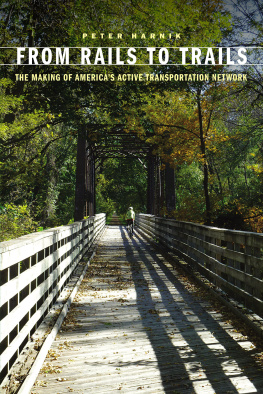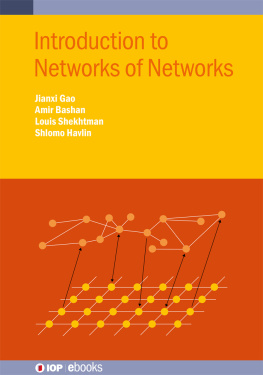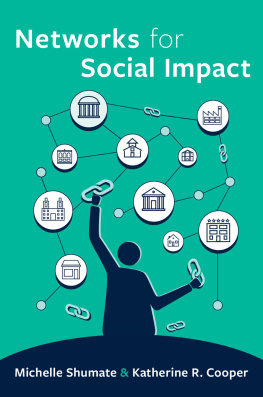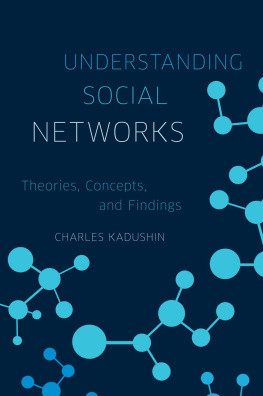Stanford University Press
Stanford, California
2014 by the Board of Trustees of the Leland Stanford Junior University.
All rights reserved.
No part of this book may be reproduced or transmitted in any form or by any means, electronic or mechanical, including photocopying and recording, or in any information storage or retrieval system without the prior written permission of Stanford University Press.
Printed in the United States of America on acid-free, archival-quality paper
Library of Congress Cataloging-in-Publication Data
Cassedy, Steven, author
Connected : how trains, genes, pineapples, piano keys, and a few disasters transformed Americans at the dawn of the twentieth century / Steven Cassedy.
pages cm.
Includes bibliographical references and index.
ISBN 978-0-8047-6372-1 (cloth : alk. paper)
1. United StatesCivilization18651918. I. Title
E169.1.C298 2014
973.8dc23
2013010533
ISBN 978-0-8047-8841-0 (electronic)
Typeset at Stanford University Press in 10/14 Minion
CONNECTED
How Trains, Genes, Pineapples, Piano Keys, and a Few Disasters Transformed Americans at the Dawn of the Twentieth Century
Steven Cassedy
STANFORD UNIVERSITY PRESS
Stanford, California
To my family
Contents
A Note on Usage
In this book, Ive made a practice of adhering to word usage that was conventional during the period Im examining. For that reason, Ive chosen to use the word Negro throughout, instead of African American. I trust this will give no offense.
Acknowledgments
(in no particular order)
Patrice Cassedy, San Diego, Calif.; Michael Schudson, University of California, San Diego (UCSD); Howard Pollack, University of Houston; Alain J. J. Cohen, UCSD; the late James H. Cassedy, National Library of Medicine, National Institutes of Health; Brian J. Cudahy, formerly of Department of Transportation; Charles Lester, vacuum cleaner historian; David Phillips, UCSD; Donald Glassman, Wollman Library, Barnard College; Noraleen A. Young, Staff Archivist, Kappa Alpha Theta Fraternity; Mary Edith Arnold, Kappa Alpha Theta Fraternity Archivist; Jocelyn K. Wilk, Assistant Director, Columbia University Archives; Steve Laise, Chief of Cultural Resources, Manhattan Sites, National Park Service; John Mullarkey, University of Dundee, Scotland; Andrew Dolkart, Columbia University; James C. Riley, Indiana University; Peter Uhlenberg, University of North Carolina, Chapel Hill; Philip L. Fradkin, author of The Great Earthquake and Firestorms of 1906; Michael Parrish, UCSD; Debra Feiger, piano technician, San Diego, Calif.; Karl Hagstrom Miller, University of Texas, Austin; Carey Stumm, Archivist, New York City Transit Museum; the late Beth M. Howse, Special Collections Librarian, John Hope and Aurelia E. Franklin Library, Fisk University; Lin Chao, UCSD; Edwin DeLeon, New York & Atlantic Railway; Paul Victor, New York & Atlantic Railway; Jason Wood, Simmons College Archives; Donna Webber, Simmons College Archives; Tony Rinaldo, Concord, Mass.; Peter Galison, Harvard University; James Morrison Sr., town historian, Gloversville, N.Y.; Joan and Bill Loveday, Fulton County Museum, Gloversville, N.Y.; Jodie Mattos, Hawaiian Collection, Thomas Hale Hamilton Library, University of Hawaii at Manoa; Michael OMalley, George Mason University; Peter Muir, Institute for Music and Health, Verbank, N.Y.; Michael Cassedy, Brooklyn, N.Y.; Meghan Finn, Brooklyn, N.Y.; Don Malcarne, town historian, Essex, Conn.; Gabriele Wienhausen, UCSD; Eva Cassedy, Nashville, Tenn.; Stephen D. Cox, UCSD; Seth Lerer, UCSD; Ronald Berman, UCSD; E. S. Cassedy Jr., Polytechnic Institute of New York (Emeritus); Kim Barrett, UCSD; the late Henry Z. Steinway, Steinway & Sons; Douglas Di Carlo, La Guardia and Wagner Archives, La Guardia Community College, City University of New York (CUNY); Rosemarie Rinaldo, San Diego, Calif.; the late Joseph A. Rinaldo Jr., San Diego, Calif.; Tim Cassedy, Southern Methodist University, Dallas, Tex.; Richard Elliott Friedman, University of Georgia, Athens; Roger Newman, Riverdale, N.Y.
Preface
I stood at a grade crossing in Del Mar, California, where I used to live. With me was cousin Ugo from Italy. The single-track line that runs along the Pacific Coast serves the local commuter trains between San Diego and the city of Oceanside, twenty miles north. It also serves Amtrak. If your eye follows the tracks south from the crossing, you can see almost nothing, for they bend sharply to the left and are immediately lost to view behind the steep bluffs over the beach. We stood silently, looking north. Past the abandoned beachside passenger station, a siding splits off from the main line, allowing one train to pull off while another one passes through. A half-mile or so from the split, the entire road bends to the left, once again out of sight. I waited for Ugo to speak, because I knew he would get it. You see, he finally said, squinting into the distance, the beauty is it can take you anywhere. Meaning these rails, right here, under our feet, in this crossing.
Just think: if I had a HiRail (one of those pickup trucks with both rubber tires and train wheels that servicemen use to perform track inspection and maintenance), and if I had the ability to throw switches wherever I wanted, I could start right here at the grade crossing in my hometown and head to Los Angeles. From Los Angeles, I could travel far north, to Vancouver, where my sister Amy lives. Or I could set out east for Chicago, go south, then east again toward Detroit. Until a few years ago, just west of the passenger station in Ann Arbor, Michigan, where I was an undergraduate in the early 1970s, I could back up and switch off the Amtrak line, onto the tracks of the Ann Arbor Railroad. Following this line south, I could pass within a mile of where my daughter-in-laws parents live and, many miles later, end up in Toledo. Following it north, where it turns into the Great Lakes Central Railroad, I could switch off near Durand onto the Lapeer Industrial Railroad and cross over the rural highway we used to take through the town of Lapeer as we drove to a vacation spot on Lake Huron. The Lapeer Industrial would take me to Port Huron, way in the east of Michigan, across the Saint Clair River from Canada. From Port Huron, I could veer south and head to Detroit, where my wife, Patrice, grew up. Detroit is connected to Windsor, Ontario, via the Michigan Central Railway Tunnel (no longer used by passenger trains), and from Windsor its an easy matter to cross through that tongue of Canada that protrudes downward from Toronto, separating Michigan and western New York, to Niagara Falls and Buffalo. From Buffalo, Amtrak runs on the tracks of the former New York Central, along the Mohawk River, to Albany. Until 1990, I could have taken a short jog north at the town of Fonda, up the tracks of the Fonda, Johnstown & Gloversville Railroad, to Gloversville, where both my paternal grandparents were born and raised. Returning from Gloversville to the main road, I could have followed the line to Schenectady, where my first cousin, father, grandfather, great uncle, and great-grandfather all attended Union College. From Schenectady, I would head to Albany, and from there I could follow the route that my grandmother Edna Muddle took when she traveled to Simmons College in 1917 to begin her college studies. In Boston, it would be an easy matter to make my way onto the tracks of the Commuter Rail and ride the Fitchburg/South Acton Line out to West Concord, passing through Waltham, where my daughter Eva attended college. There I would switch onto a lonely abandoned line running through wooded terrain and photographed in stunning black and white by Boston photographer Tony Rinaldo (my brother-in-law). The photo hangs by my desk. Im looking at it right now, as I write this. In it, the solitary track recedes into an unseen, dimly lighted distance.









